Pearl Zhu's Blog, page 1347
April 18, 2016
“Digital Valley” Book Conclusion: Is There such Thing as a Magic Wisdom Formula?
Wisdom is not a product of schooling but of the lifelong attempt to acquire it. - Albert Einstein
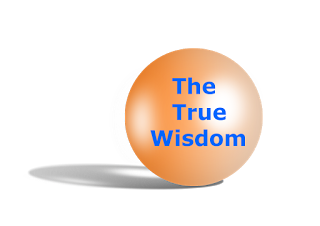 We live in the age of information abundance, there are lots of data, lots of information, lots of smarts, lots of ability, lots of attitudes, but very, very little wisdom. “But how do we get wisdom”? It’s the century-old question, and obviously nobody can provide a perfect answer. However, it doesn’t mean we couldn’t imagine, brainstorm, experiment, induce & deduce, explore, discover, and abstract wisdom from information-knowledge-intelligence-insight. There is a wisdom formula we shared at the end of the book, though it is not for making any conclusion, but for provoking further thought to capture wisdom.
We live in the age of information abundance, there are lots of data, lots of information, lots of smarts, lots of ability, lots of attitudes, but very, very little wisdom. “But how do we get wisdom”? It’s the century-old question, and obviously nobody can provide a perfect answer. However, it doesn’t mean we couldn’t imagine, brainstorm, experiment, induce & deduce, explore, discover, and abstract wisdom from information-knowledge-intelligence-insight. There is a wisdom formula we shared at the end of the book, though it is not for making any conclusion, but for provoking further thought to capture wisdom.
Knowledge is not wisdom, but it is a great foundation to build wisdom on it. Knowledge is just like any useful and resourceful information available with you in your brain instead of in the books, drive or some other form; wisdom is the transformation of YOU into “A Real Yourself” for which your knowledge may help you, sometimes facilitate too, but you need to have an inner drive to demonstrate wisdom.
 Knowledge is about what you know, but wisdom is about admitting knowing unknown and unknown unknown. Wisdom is learning what you don’t know and then sharing what you have learned. Know what you must know, know it well, and share your experience with others, and keep learning with an open mind and humble attitude.
Knowledge is about what you know, but wisdom is about admitting knowing unknown and unknown unknown. Wisdom is learning what you don’t know and then sharing what you have learned. Know what you must know, know it well, and share your experience with others, and keep learning with an open mind and humble attitude.
Knowledge is the ‘power,’ wisdom is the exceptionally effective use of the power. Knowledge is not always proportional wisdom, and being older won’t guarantee one getting wisdom. Knowledge is input, and wisdom is the intelligence to make use of that input in the right manner. Knowledge is learned, and wisdom is earned. Knowledge speaks, but wisdom listens. Knowledge could be outdated soon, but wisdom is timeless.
Follow us at: @Pearl_Zhu
 We live in the age of information abundance, there are lots of data, lots of information, lots of smarts, lots of ability, lots of attitudes, but very, very little wisdom. “But how do we get wisdom”? It’s the century-old question, and obviously nobody can provide a perfect answer. However, it doesn’t mean we couldn’t imagine, brainstorm, experiment, induce & deduce, explore, discover, and abstract wisdom from information-knowledge-intelligence-insight. There is a wisdom formula we shared at the end of the book, though it is not for making any conclusion, but for provoking further thought to capture wisdom.
We live in the age of information abundance, there are lots of data, lots of information, lots of smarts, lots of ability, lots of attitudes, but very, very little wisdom. “But how do we get wisdom”? It’s the century-old question, and obviously nobody can provide a perfect answer. However, it doesn’t mean we couldn’t imagine, brainstorm, experiment, induce & deduce, explore, discover, and abstract wisdom from information-knowledge-intelligence-insight. There is a wisdom formula we shared at the end of the book, though it is not for making any conclusion, but for provoking further thought to capture wisdom.
Knowledge is not wisdom, but it is a great foundation to build wisdom on it. Knowledge is just like any useful and resourceful information available with you in your brain instead of in the books, drive or some other form; wisdom is the transformation of YOU into “A Real Yourself” for which your knowledge may help you, sometimes facilitate too, but you need to have an inner drive to demonstrate wisdom.
 Knowledge is about what you know, but wisdom is about admitting knowing unknown and unknown unknown. Wisdom is learning what you don’t know and then sharing what you have learned. Know what you must know, know it well, and share your experience with others, and keep learning with an open mind and humble attitude.
Knowledge is about what you know, but wisdom is about admitting knowing unknown and unknown unknown. Wisdom is learning what you don’t know and then sharing what you have learned. Know what you must know, know it well, and share your experience with others, and keep learning with an open mind and humble attitude.
Knowledge is the ‘power,’ wisdom is the exceptionally effective use of the power. Knowledge is not always proportional wisdom, and being older won’t guarantee one getting wisdom. Knowledge is input, and wisdom is the intelligence to make use of that input in the right manner. Knowledge is learned, and wisdom is earned. Knowledge speaks, but wisdom listens. Knowledge could be outdated soon, but wisdom is timeless.
Follow us at: @Pearl_Zhu
Published on April 18, 2016 23:25
“CIO Master” Tuning X: Innovating Talent Management via Three “How” Inquiries
 The digital transformation means that companies need to infuse digital into every aspect of the business, shaping the enterprise-wide digital capabilities and overall ecosystem which include people, process, and technology. As digital is the age of people, people are always the most in valuable human asset and capital investment in any business, but often the weakest link in Digital Transformation. So how would you define the right people? How do you define wrong, average, mediocre, good, great and extraordinary person? And how can you innovate Talent Management via inquiries?
The digital transformation means that companies need to infuse digital into every aspect of the business, shaping the enterprise-wide digital capabilities and overall ecosystem which include people, process, and technology. As digital is the age of people, people are always the most in valuable human asset and capital investment in any business, but often the weakest link in Digital Transformation. So how would you define the right people? How do you define wrong, average, mediocre, good, great and extraordinary person? And how can you innovate Talent Management via inquiries?
How do you define “Digital Fit”? The term 'fit' can be interpreted with a degree of variability. “Digital fit” should be first defined as “mind fit,” and then following with attitude fit and behavior fit. Where you want to look for 'fit' is in relation to the cognitive intelligence to speed up digital transformation, values you want to build or maintain within your team, and the kinds of behaviors that you would expect to see as a result of, or in alignment with, those values. 'Fit' doesn't mean that everyone needs to have the same thought process, the same personalities, the same preferences, or the same experiences. On the opposite, the beauty is in the color of characters and many shades of creativity. Fit and diversity are not mutually exclusive. Just because two different people have different backgrounds, different approaches, and different opinions does not mean they can't be a good fit. Organizational fit means "incluversity," not about cookie cutting or hiring clones. Further more, fit or misfit is contextual. Are you planning to build a homogeneous or heterogeneous team; a complimentary team or a competitive team? Organizations need to be thoughtful about whether you are hiring people who are an obvious "fit," and passing on people who are less so (at least on the surface). Thought, skill and experience diversity are what make effective innovation and growth possible, and you are selling short when you hire for homogeneity. Organizational fit from conventional lenses makes relationships easy and perpetuates the status quo, so if companies are satisfied with where they are and going then they should pay attention to fit. If things need to change then they need to quit hiring clones. What is important is that everyone feels committed to the goals of the team, and are comfortable with the behavioral expectations associated with those goals. The fitness is also an important predictor of retention, so finding someone with the right fit can be a significant cost saving over time if turnover has been a challenge for you.
How to attract, develop, and retain the best digital talent? Recognizing that talent is people and people have ambition and drive. If you enable and empower people to do what they were hired for and feed their ambition and drive they will stay. Most people want to feel wanted and appreciated for their effort and work. Find the embers of drive and desire and then feed it and encouragem keeps people interested with growth opportunities and projects challenges. To accept we are human and mistakes are made at times. Do not to dwell on the mistake but take it as a lesson to learn and work with your staff to find those lessons. Advocate the talent to "compete for the uniqueness from "compete for the best of everything," build a healthy culture to nurture professionalism, talent growth, be cognizant on talent strength, encourage talent to take extra miles, build up a high-performance team to embrace the cognitive difference.
 Innovating via inquiries. Talent Management is the key business capability in digital transformation, it has to be built upon all the dimensions such as scope, alignment, design, execution, governance, metrics, etc. to enforce cross-functional collaboration, and to embed agility into the process of adapting to the changes, to untap the talent potential and unleash the full digital potential of your organization and our society.
Innovating via inquiries. Talent Management is the key business capability in digital transformation, it has to be built upon all the dimensions such as scope, alignment, design, execution, governance, metrics, etc. to enforce cross-functional collaboration, and to embed agility into the process of adapting to the changes, to untap the talent potential and unleash the full digital potential of your organization and our society.Follow us at: @Pearl_Zhu
Published on April 18, 2016 23:18
April 17, 2016
How to Apply Critical Thinking to Ask Good Questions
Critical Thinking becomes more “critical’ in today’s “VUCA” digital new normal.
 Critical Thinking is the rational analysis (often with creativity embedded in it) and evaluation of the issues in order to make a fair judgment. There is only a very small fraction of true Critical Thinkers who can always dig through the root causes of problems. How to debunk the myth of Critical Thinking, and how to apply Critical Thinking to ask good questions for either problems-solving or making sound judgment and effective decisions timely?
Critical Thinking is the rational analysis (often with creativity embedded in it) and evaluation of the issues in order to make a fair judgment. There is only a very small fraction of true Critical Thinkers who can always dig through the root causes of problems. How to debunk the myth of Critical Thinking, and how to apply Critical Thinking to ask good questions for either problems-solving or making sound judgment and effective decisions timely?
Critical Thinkers often starts with asking “WHY,” rather than jump into “HOW”: Critical Thinking needs to combine different thinking processes, to gather a mass of information, break it apart and reconstructed with a level of accuracy, projecting futuristic events, numbers, etc., and it’s complex thought process involving thinking differently, or thinking out of the box. It is about breaking the rules that have been created through experience. So experience is inside the box. Critical Thinkers live out of the box, ask open questions to collect relevant information. Problem solvers who can leverage Critical Thinking are always chasing root cause via asking the big 'WHY' questions without too rushing up into HOW.
Critical Thinkers do not just ask one or two random questions, they ask in a structural way continually: Critical Thinking as an iterative process leads to a series of refinements based on learning and experience. Critical Thinking implies some systematic methodology, employing and applying the criteria deemed appropriate by the thinkers involved, to arrive at the tangible and reproducible truth - the commonly accepted objective, testable or measurable, time-bound reality. So Critical Thinkers continue to learn and make inquiries. Rather than "good" or "bad,” Critical Thinking is ever-improving. In the business world, at least, you can't always wait for the "best" decision to emerge. You have to make the best decision you can, based on a structural way to make inquiries, and a sound process to make a better choice, and have the gut to admit when a mid-course correction is in order.
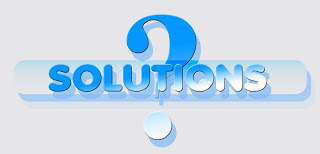 Critical Thinking requires an ability to be able to not only ask the right questions, but understand the context: The effective critical thinking scenario includes, knowing by observing; what is said or done, how, when, where, why it's said or done, and who said this or did that. Understanding through asking the right questions, and open for varying answers. They not only ask the right questions, but rather absorb information forecast potentials; risks/benefits; mitigation and compare and contrast options, facts, ideas against logic and creativity. From a management perspective, the best way to learn critical thinking is simply to listen to your workforce. Ensure that everyone in the company feels valued. Encourage people to raise any issues. If people feel confident to discuss matters within the company, then any problems can be dealt with before they become serious, Also, Everyone will feel like they are contributing to the growth of the company. Getting input from a broad range of personalities and cognitive difference of people on the particular matter. Think both in macro and micro way, and try to tie inter-dependencies into the mix and believe, to your core, you might still miss "something." It's then that any Critical Thinking will be able to help drive improvement, create new ideas or solutions and make them stick successfully.
Critical Thinking requires an ability to be able to not only ask the right questions, but understand the context: The effective critical thinking scenario includes, knowing by observing; what is said or done, how, when, where, why it's said or done, and who said this or did that. Understanding through asking the right questions, and open for varying answers. They not only ask the right questions, but rather absorb information forecast potentials; risks/benefits; mitigation and compare and contrast options, facts, ideas against logic and creativity. From a management perspective, the best way to learn critical thinking is simply to listen to your workforce. Ensure that everyone in the company feels valued. Encourage people to raise any issues. If people feel confident to discuss matters within the company, then any problems can be dealt with before they become serious, Also, Everyone will feel like they are contributing to the growth of the company. Getting input from a broad range of personalities and cognitive difference of people on the particular matter. Think both in macro and micro way, and try to tie inter-dependencies into the mix and believe, to your core, you might still miss "something." It's then that any Critical Thinking will be able to help drive improvement, create new ideas or solutions and make them stick successfully.
Critical Thinking becomes more “critical’ in today’s “VUCA” digital new normal. Even the best Critical Thinkers have blind spots. Because we all have a cognitive bias, whether individually or collectively, such truths derived by imperfect people using imperfect processes will necessarily leave a measure of uncertainty. Thus, any question, whether perfect or imperfect, will by definition be imperfectly answered or unanswered. Still, Critical Thinking helps to frame the right problems via ask better questions and solve them more effectively.
Follow us at: @Pearl_Zhu
 Critical Thinking is the rational analysis (often with creativity embedded in it) and evaluation of the issues in order to make a fair judgment. There is only a very small fraction of true Critical Thinkers who can always dig through the root causes of problems. How to debunk the myth of Critical Thinking, and how to apply Critical Thinking to ask good questions for either problems-solving or making sound judgment and effective decisions timely?
Critical Thinking is the rational analysis (often with creativity embedded in it) and evaluation of the issues in order to make a fair judgment. There is only a very small fraction of true Critical Thinkers who can always dig through the root causes of problems. How to debunk the myth of Critical Thinking, and how to apply Critical Thinking to ask good questions for either problems-solving or making sound judgment and effective decisions timely?
Critical Thinkers often starts with asking “WHY,” rather than jump into “HOW”: Critical Thinking needs to combine different thinking processes, to gather a mass of information, break it apart and reconstructed with a level of accuracy, projecting futuristic events, numbers, etc., and it’s complex thought process involving thinking differently, or thinking out of the box. It is about breaking the rules that have been created through experience. So experience is inside the box. Critical Thinkers live out of the box, ask open questions to collect relevant information. Problem solvers who can leverage Critical Thinking are always chasing root cause via asking the big 'WHY' questions without too rushing up into HOW.
Critical Thinkers do not just ask one or two random questions, they ask in a structural way continually: Critical Thinking as an iterative process leads to a series of refinements based on learning and experience. Critical Thinking implies some systematic methodology, employing and applying the criteria deemed appropriate by the thinkers involved, to arrive at the tangible and reproducible truth - the commonly accepted objective, testable or measurable, time-bound reality. So Critical Thinkers continue to learn and make inquiries. Rather than "good" or "bad,” Critical Thinking is ever-improving. In the business world, at least, you can't always wait for the "best" decision to emerge. You have to make the best decision you can, based on a structural way to make inquiries, and a sound process to make a better choice, and have the gut to admit when a mid-course correction is in order.
 Critical Thinking requires an ability to be able to not only ask the right questions, but understand the context: The effective critical thinking scenario includes, knowing by observing; what is said or done, how, when, where, why it's said or done, and who said this or did that. Understanding through asking the right questions, and open for varying answers. They not only ask the right questions, but rather absorb information forecast potentials; risks/benefits; mitigation and compare and contrast options, facts, ideas against logic and creativity. From a management perspective, the best way to learn critical thinking is simply to listen to your workforce. Ensure that everyone in the company feels valued. Encourage people to raise any issues. If people feel confident to discuss matters within the company, then any problems can be dealt with before they become serious, Also, Everyone will feel like they are contributing to the growth of the company. Getting input from a broad range of personalities and cognitive difference of people on the particular matter. Think both in macro and micro way, and try to tie inter-dependencies into the mix and believe, to your core, you might still miss "something." It's then that any Critical Thinking will be able to help drive improvement, create new ideas or solutions and make them stick successfully.
Critical Thinking requires an ability to be able to not only ask the right questions, but understand the context: The effective critical thinking scenario includes, knowing by observing; what is said or done, how, when, where, why it's said or done, and who said this or did that. Understanding through asking the right questions, and open for varying answers. They not only ask the right questions, but rather absorb information forecast potentials; risks/benefits; mitigation and compare and contrast options, facts, ideas against logic and creativity. From a management perspective, the best way to learn critical thinking is simply to listen to your workforce. Ensure that everyone in the company feels valued. Encourage people to raise any issues. If people feel confident to discuss matters within the company, then any problems can be dealt with before they become serious, Also, Everyone will feel like they are contributing to the growth of the company. Getting input from a broad range of personalities and cognitive difference of people on the particular matter. Think both in macro and micro way, and try to tie inter-dependencies into the mix and believe, to your core, you might still miss "something." It's then that any Critical Thinking will be able to help drive improvement, create new ideas or solutions and make them stick successfully.
Critical Thinking becomes more “critical’ in today’s “VUCA” digital new normal. Even the best Critical Thinkers have blind spots. Because we all have a cognitive bias, whether individually or collectively, such truths derived by imperfect people using imperfect processes will necessarily leave a measure of uncertainty. Thus, any question, whether perfect or imperfect, will by definition be imperfectly answered or unanswered. Still, Critical Thinking helps to frame the right problems via ask better questions and solve them more effectively.
Follow us at: @Pearl_Zhu
Published on April 17, 2016 23:23
“Digital Valley” Book Preview Chapter 5: Culture Wisdom
Culture wisdom is cognitive intelligence to bring in the profound understanding of the problems, global viewpoints, and workforce harmony.
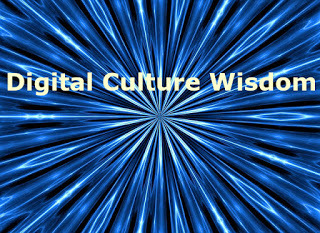
Although culture is invisible, there are many vivid culture descriptions and metaphors. Generally speaking, culture is the “mindsets, attitudes, feelings, values and behaviors that characterize and inform a group and its member.” The word “culture” stems from a latin root that means the tilling of the soil. A company’s culture helps to define what a company is like - what it means to be part of the organization, how to act as a team, what people in the company believe and strive for, and what is the business brand, etc. With the emergent trend of digitalization and globalization, culture wisdom is the type of intelligence for tolerance of ambiguity, a set of capabilities such as cultural cognition, learning agility, handling complexity, empathy, and flexibility, etc. It is the wisdom to bring in-depth understanding, cognitive intelligence, global view, and workforce harmony.
Global mindset: Global mindset is a worldview that looks at problems or issues in such a way that a solution emerges through a collaborative multicultural approach involving global psychological capital, intellectual and global social capital. Being global is about crossing, not just borders but also cultural divides between business, nations or social sectors. A global mind has good cultural empathy which means that you have to not just see through the eyes of someone who is different, but you have to think through that person’s brain. Culture is much deeper than customs or languages. True culture empathy springs from personality, early nurturing, curiosity, and appreciation of the diversity of thought and characters. Cultural behavior is the end product of collected wisdom, filtered and passed down through many generations as shared core beliefs, values, assumptions, notions, and persistent action patterns. Hence, culture management is an integral component of people management including all talent management aspects, the sophistication of talent practices, how people work and manage other people, workforce demographics, and composition, etc.
Organization’s culture expression: Organizational culture is the collective mindset, attitude, and behaviors. Culture is like an iceberg where the visible elements such as behaviors make much sense with recognizing and understanding the underlying mindsets, expectations, and assumptions. Culture is an organization’s personality, so what’s your culture expression, and how to communicate and measure it effectively. One of the important signals of corporate culture is about how decisions are made in the different level of an organization. The systems, processes and so forth are the clear manifestation of the leadership culture. It is the culture that clearly impacts on how these policies, procedures, and rewards that drive behavior. The ‘visible’ part of culture is the collective attitude - how employees behave in the workplace, interact with customers, adapt to changes and accept challenges., etc. All these factors take shape over a period through the decision-making process. Hence, even culture is invisible, it can be perceived, even culture is untouchable, it can be felt, and even culture is intangible, it can be measured.
 Wisdom in the workplace: Wisdom in the workplace is to have positive mindsets and build an innovative culture. It means to develop positive thinking and proactive actions in a workplace, to inspire creativity, learning and progression, but discourage unprofessionalism. Wisdom in the workplace means to have the right people getting the right information the right time in dealing with the varying situation wisely. Employee disengagement is a widespread malady in organizations, causing the loss of billions of dollars, hours of dissatisfaction, so wisdom in the workplace is not just about productivity, more about building a positive and innovative culture, cultivating intelligent and empathic leadership and management team, creating synergy by putting the right talent with the right capability in the right position at the right time to achieve business result. So overall speaking, the wisdom in the workplace means growth mindset, intellectual stimulation, the culture of innovation, high-effective leadership, and collaborative working relationship to both unleash employees’ potential and drive organizational maturity.
Wisdom in the workplace: Wisdom in the workplace is to have positive mindsets and build an innovative culture. It means to develop positive thinking and proactive actions in a workplace, to inspire creativity, learning and progression, but discourage unprofessionalism. Wisdom in the workplace means to have the right people getting the right information the right time in dealing with the varying situation wisely. Employee disengagement is a widespread malady in organizations, causing the loss of billions of dollars, hours of dissatisfaction, so wisdom in the workplace is not just about productivity, more about building a positive and innovative culture, cultivating intelligent and empathic leadership and management team, creating synergy by putting the right talent with the right capability in the right position at the right time to achieve business result. So overall speaking, the wisdom in the workplace means growth mindset, intellectual stimulation, the culture of innovation, high-effective leadership, and collaborative working relationship to both unleash employees’ potential and drive organizational maturity.
We are on the major shift from industrial silos to the digital hyperconnectivity. Digital boundaries are not straight lines, they are fluid to adapt to changes, so does a digital culture. Digital culture as collective minds and attitudes have to continue to move forward, not backward, so we have to reflect and examine our own thoughts, belief, and actions, to gain the culture wisdom and lift the organization and our society to the next level of advancement and prosperity.
Digital Valley Book Order Link on Amazon Digital Valley Book Order Link on Barners&Noble Digital Valley Book Order Link on IBook Digital Valley Book Slideshare Presentation & Video Digital Valley Introduction Digital Valley Book Preview Chapter 1 Creative Wisdom Digital Valley Book Preview Chapter 2 Strategic Wisdom Digital Valley Book Preview Chapter 3 System Wisdom Digital Valley Book Preview Chapter 4 Decision WisdomDigital Valley Book Preview Chapter 5 Culture Wisdom
Follow us at: @Pearl_Zhu
Published on April 17, 2016 23:20
“CIO Master” Tuning IX: Three Roles to Accelerate Digital Transformation
CIO Masters have to advocate their organization, and IT value has to be driven, indicated and understood at all levels of the organization.
 IT plays a pivotal role in the digital transformation of many forward-looking organizations today. CIOs must set the principles, guideline and rules to run a digital IT. IT is in the middle of a sea change, it is important to realize that there are basic principles and rules that make it work. But the self-centered "our jobs are hard" line only isolates IT more. How can IT reinvent its tarnished brand, and reimagine its role to accelerate changes? Make sure that nothing is dismissed due to out of date beliefs or the natural human emotions. Understand your organization’s strategic goals and initiatives and rejuvenate CIO leadership to reach the next level of maturity:
IT plays a pivotal role in the digital transformation of many forward-looking organizations today. CIOs must set the principles, guideline and rules to run a digital IT. IT is in the middle of a sea change, it is important to realize that there are basic principles and rules that make it work. But the self-centered "our jobs are hard" line only isolates IT more. How can IT reinvent its tarnished brand, and reimagine its role to accelerate changes? Make sure that nothing is dismissed due to out of date beliefs or the natural human emotions. Understand your organization’s strategic goals and initiatives and rejuvenate CIO leadership to reach the next level of maturity:
CIOs as a “Simlifier”: By nature, technology is complex, and the information is overloading. However, the purpose and advancement of IT are not to complicate things, on the opposite, simplicity is the optimal level of complexity. Ultimately, IT needs to make things as simple as possible, simplicity should rule the day. CIOs need to take business problems, find solutions for them, increase value propositions, simplify operations, processes, and be better partners with the rest of the organizations. Therefore, the IT organization shouldn't just be stocked with technologists. You need visionary, problem solvers, change agents, customer champions and innovators, and those who can think forward, dig deeper, see through the issues, look around and beneath the corner, and work smarter. Further, IT has to walk the talk, in many situations, IT manages information on a business, but, refuse to run them and deeply analyze on IT itself. IT knows a lot about how to make applications better, more reliable, less maintenance, easier to change, but it doesn't seem to want to make that a reality. So IT has to look at itself, improve its own agility and effectiveness, simplify the way it does things, and amplify best practices into the enterprise scope.
CIO as an Orchestra Conductor: In the digital music, IT needs to go beyond just playing the background music to support the melody. It’s being the sheet music, take that away and you run the risk of the orchestra stopping altogether or, at least, playing the wrong tune! IT must always be tuned up to enable business objectives and catalyze business growth for the long term perspective.There needs to be some in-depth of technical understanding and business insight. The need for change is obvious. CIO as change agent not only touches his/her own function but also needs to make an influence on entire organization and business ecosystem as well. It takes strategic planning, methodology and practice in orchestrating such transformation. The CIO must be attuned to the business' IT needs and works with all stakeholders to ensure they have the right tools to execute and business won't miss the opportunity to grow. The CIOs have to master at conducting such a hybrid digital orchestra. The "conductor" has to lead the in-house musicians and has to take into account the time lag of the orchestras on another continent. This looks more and more like the situation faced by global business leaders in the Digital Era. They have to keep the in-house order, and must, simultaneously, coordinate with distant contributors; otherwise, the "music" will jar the ears. The term is more generic and stresses the role of a team leader and the fact the CIO wouldn't be able to create a 'symphony' without the full participation of his/her team members and cross-functional collaboration of business partners.
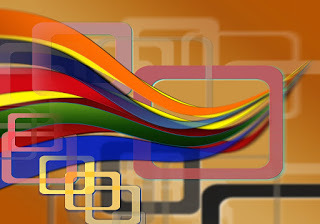 CIO as a Talent Master: IT has to shift from a back-office support function to a business innovation engine. Because more often than not, technologies are the disruptive forces of innovation and the information is the most invaluable asset in the organization besides talent. The "new" IT workforce needs to be able to self-learn and be creative enough, investigate new technologies and software, to be curious about how they can blend and integrate different technologies and solutions, not as technical challenges, but for achieving business value and customer delight. The CIO needs to have the ability to inspire others to a shared vision; the ability to inspire, build and maintain the trust and confidence of those great hires is paramount to the continued success of the organization and the CxO's brand and impact. A great leader is also a culture master, since it is critical for building a culture of innovation due to the changing nature of technology, as being content with a status quo culture will significantly limit the company's ability to become great. The wider organization needs to provide support for assuring the skills people bring into one organization don't go to waste in the same. CIOs should make it easier for career growth within the wider organization. You can have all the ability and confidence in the world, but if your team is not inspired and does not trust you and believe in your vision, you can't go too far. CIOs need to unleash the potential of the talented IT professionals, as well as the digital potential of IT and the organization.
CIO as a Talent Master: IT has to shift from a back-office support function to a business innovation engine. Because more often than not, technologies are the disruptive forces of innovation and the information is the most invaluable asset in the organization besides talent. The "new" IT workforce needs to be able to self-learn and be creative enough, investigate new technologies and software, to be curious about how they can blend and integrate different technologies and solutions, not as technical challenges, but for achieving business value and customer delight. The CIO needs to have the ability to inspire others to a shared vision; the ability to inspire, build and maintain the trust and confidence of those great hires is paramount to the continued success of the organization and the CxO's brand and impact. A great leader is also a culture master, since it is critical for building a culture of innovation due to the changing nature of technology, as being content with a status quo culture will significantly limit the company's ability to become great. The wider organization needs to provide support for assuring the skills people bring into one organization don't go to waste in the same. CIOs should make it easier for career growth within the wider organization. You can have all the ability and confidence in the world, but if your team is not inspired and does not trust you and believe in your vision, you can't go too far. CIOs need to unleash the potential of the talented IT professionals, as well as the digital potential of IT and the organization.
Digital transformation is a journey, there will be challenging times on the road ahead for sure. Transformation means to change the "nature" of something, albeit that the increasing pace of technological advances has clearly impacted the nature and scope of opportunity. Transformation efforts need to be undertaken as the means of getting to a defined different capability to accomplish a defined goal. CIO Masters have to advocate their organization, and IT value has to be driven, indicated and understood at all levels of the organization. This is accomplished through establishing strong interdependent relationships, operational excellence, customer satisfaction and superior sets of digital capabilities in order to move up the organizational maturity.
CIO Master Order Link on AmazonCIO Master Ordre Link on Barner & NobleCIO Master Order Link On IBooks
“CIO Master” Book Preview Quote Collection III“CIO Master” Book Preview Quote Collection II“CIO Master” Book Preview Quote Collection I, Slideshare Presentation“CIO Master” Book Preview Conclusion Running IT as Digital Transformer“CIO Master” Book Preview: Chapter 9 IT Agility“CIO Master” Book Preview: Chapter 8 Three "P"s in Running Digital IT“CIO Master” Book Preview: Chapter 7 IT Innovation Management“CIO Master” Book Preview: Chapter 6 Digital Strategy-Execution Continuum"CIO Master” Book Preview: Chapter 5 Thirteen Digital Flavored IT“CIO Master” Book Preview: Chapter 4 CIO as Talent Master Introduction“CIO Master” Book Preview: Chapter 3 “CIOs as Change Agent” Introduction“CIO Master” Book Preview: Chapter 2 “CIOs as Digital Visionary” Introduction“CIO Master” Book Preview: Chapter 1 “Twelve Digital CIO Personas” Introduction"CIO Master - Unleash the Digital Potential of IT" Introduction
"CIO Master - Unleash the Digital Potential of IT" Book PreviewFollow us at: @Pearl_Zhu
 IT plays a pivotal role in the digital transformation of many forward-looking organizations today. CIOs must set the principles, guideline and rules to run a digital IT. IT is in the middle of a sea change, it is important to realize that there are basic principles and rules that make it work. But the self-centered "our jobs are hard" line only isolates IT more. How can IT reinvent its tarnished brand, and reimagine its role to accelerate changes? Make sure that nothing is dismissed due to out of date beliefs or the natural human emotions. Understand your organization’s strategic goals and initiatives and rejuvenate CIO leadership to reach the next level of maturity:
IT plays a pivotal role in the digital transformation of many forward-looking organizations today. CIOs must set the principles, guideline and rules to run a digital IT. IT is in the middle of a sea change, it is important to realize that there are basic principles and rules that make it work. But the self-centered "our jobs are hard" line only isolates IT more. How can IT reinvent its tarnished brand, and reimagine its role to accelerate changes? Make sure that nothing is dismissed due to out of date beliefs or the natural human emotions. Understand your organization’s strategic goals and initiatives and rejuvenate CIO leadership to reach the next level of maturity:
CIOs as a “Simlifier”: By nature, technology is complex, and the information is overloading. However, the purpose and advancement of IT are not to complicate things, on the opposite, simplicity is the optimal level of complexity. Ultimately, IT needs to make things as simple as possible, simplicity should rule the day. CIOs need to take business problems, find solutions for them, increase value propositions, simplify operations, processes, and be better partners with the rest of the organizations. Therefore, the IT organization shouldn't just be stocked with technologists. You need visionary, problem solvers, change agents, customer champions and innovators, and those who can think forward, dig deeper, see through the issues, look around and beneath the corner, and work smarter. Further, IT has to walk the talk, in many situations, IT manages information on a business, but, refuse to run them and deeply analyze on IT itself. IT knows a lot about how to make applications better, more reliable, less maintenance, easier to change, but it doesn't seem to want to make that a reality. So IT has to look at itself, improve its own agility and effectiveness, simplify the way it does things, and amplify best practices into the enterprise scope.
CIO as an Orchestra Conductor: In the digital music, IT needs to go beyond just playing the background music to support the melody. It’s being the sheet music, take that away and you run the risk of the orchestra stopping altogether or, at least, playing the wrong tune! IT must always be tuned up to enable business objectives and catalyze business growth for the long term perspective.There needs to be some in-depth of technical understanding and business insight. The need for change is obvious. CIO as change agent not only touches his/her own function but also needs to make an influence on entire organization and business ecosystem as well. It takes strategic planning, methodology and practice in orchestrating such transformation. The CIO must be attuned to the business' IT needs and works with all stakeholders to ensure they have the right tools to execute and business won't miss the opportunity to grow. The CIOs have to master at conducting such a hybrid digital orchestra. The "conductor" has to lead the in-house musicians and has to take into account the time lag of the orchestras on another continent. This looks more and more like the situation faced by global business leaders in the Digital Era. They have to keep the in-house order, and must, simultaneously, coordinate with distant contributors; otherwise, the "music" will jar the ears. The term is more generic and stresses the role of a team leader and the fact the CIO wouldn't be able to create a 'symphony' without the full participation of his/her team members and cross-functional collaboration of business partners.
 CIO as a Talent Master: IT has to shift from a back-office support function to a business innovation engine. Because more often than not, technologies are the disruptive forces of innovation and the information is the most invaluable asset in the organization besides talent. The "new" IT workforce needs to be able to self-learn and be creative enough, investigate new technologies and software, to be curious about how they can blend and integrate different technologies and solutions, not as technical challenges, but for achieving business value and customer delight. The CIO needs to have the ability to inspire others to a shared vision; the ability to inspire, build and maintain the trust and confidence of those great hires is paramount to the continued success of the organization and the CxO's brand and impact. A great leader is also a culture master, since it is critical for building a culture of innovation due to the changing nature of technology, as being content with a status quo culture will significantly limit the company's ability to become great. The wider organization needs to provide support for assuring the skills people bring into one organization don't go to waste in the same. CIOs should make it easier for career growth within the wider organization. You can have all the ability and confidence in the world, but if your team is not inspired and does not trust you and believe in your vision, you can't go too far. CIOs need to unleash the potential of the talented IT professionals, as well as the digital potential of IT and the organization.
CIO as a Talent Master: IT has to shift from a back-office support function to a business innovation engine. Because more often than not, technologies are the disruptive forces of innovation and the information is the most invaluable asset in the organization besides talent. The "new" IT workforce needs to be able to self-learn and be creative enough, investigate new technologies and software, to be curious about how they can blend and integrate different technologies and solutions, not as technical challenges, but for achieving business value and customer delight. The CIO needs to have the ability to inspire others to a shared vision; the ability to inspire, build and maintain the trust and confidence of those great hires is paramount to the continued success of the organization and the CxO's brand and impact. A great leader is also a culture master, since it is critical for building a culture of innovation due to the changing nature of technology, as being content with a status quo culture will significantly limit the company's ability to become great. The wider organization needs to provide support for assuring the skills people bring into one organization don't go to waste in the same. CIOs should make it easier for career growth within the wider organization. You can have all the ability and confidence in the world, but if your team is not inspired and does not trust you and believe in your vision, you can't go too far. CIOs need to unleash the potential of the talented IT professionals, as well as the digital potential of IT and the organization.Digital transformation is a journey, there will be challenging times on the road ahead for sure. Transformation means to change the "nature" of something, albeit that the increasing pace of technological advances has clearly impacted the nature and scope of opportunity. Transformation efforts need to be undertaken as the means of getting to a defined different capability to accomplish a defined goal. CIO Masters have to advocate their organization, and IT value has to be driven, indicated and understood at all levels of the organization. This is accomplished through establishing strong interdependent relationships, operational excellence, customer satisfaction and superior sets of digital capabilities in order to move up the organizational maturity.
CIO Master Order Link on AmazonCIO Master Ordre Link on Barner & NobleCIO Master Order Link On IBooks
“CIO Master” Book Preview Quote Collection III“CIO Master” Book Preview Quote Collection II“CIO Master” Book Preview Quote Collection I, Slideshare Presentation“CIO Master” Book Preview Conclusion Running IT as Digital Transformer“CIO Master” Book Preview: Chapter 9 IT Agility“CIO Master” Book Preview: Chapter 8 Three "P"s in Running Digital IT“CIO Master” Book Preview: Chapter 7 IT Innovation Management“CIO Master” Book Preview: Chapter 6 Digital Strategy-Execution Continuum"CIO Master” Book Preview: Chapter 5 Thirteen Digital Flavored IT“CIO Master” Book Preview: Chapter 4 CIO as Talent Master Introduction“CIO Master” Book Preview: Chapter 3 “CIOs as Change Agent” Introduction“CIO Master” Book Preview: Chapter 2 “CIOs as Digital Visionary” Introduction“CIO Master” Book Preview: Chapter 1 “Twelve Digital CIO Personas” Introduction"CIO Master - Unleash the Digital Potential of IT" Introduction
"CIO Master - Unleash the Digital Potential of IT" Book PreviewFollow us at: @Pearl_Zhu
Published on April 17, 2016 23:15
April 16, 2016
“Digital Valley” Chapter IV Book Preview: Decision Wisdom
Wisdom has to do with the soundness of judgment.
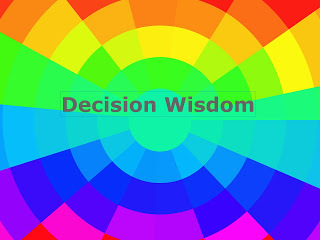 The majority of leaders and professional spend a significant amount of time on making large or small decisions in the work and life. It takes wisdom, not just the intelligence to make effective decisions. There is fuzziness in the decisions because there is fuzziness in conflicting criteria. At the Digital Era, making data-based decisions means to leverage analytical thinking, advanced analytic tools, the human’s intuition, and add the “wisdom’ in the decision process to improve the overall effectiveness of decision making.
The majority of leaders and professional spend a significant amount of time on making large or small decisions in the work and life. It takes wisdom, not just the intelligence to make effective decisions. There is fuzziness in the decisions because there is fuzziness in conflicting criteria. At the Digital Era, making data-based decisions means to leverage analytical thinking, advanced analytic tools, the human’s intuition, and add the “wisdom’ in the decision process to improve the overall effectiveness of decision making.
Judgment and decision making are often considered together: The biggest challenge is knowing what you don’t know, it’s a reasonable moniker for decision-making blind spot and biases. Hence, good judgment is a must for good decisions. There is also a clear distinction between a good decision and a good outcome. In the world of uncertainty and ambiguity, the mind with decision wisdom can, by definition, not control the outcome, however, focus on making good decisions and the best chance for a good outcome is to make a good decision. Some consider decision making is a skill, others think it’s a leadership quality. Either way, it starts with such a “decisive mindset,” with decision wisdom - information-empowered, analytics oriented, and striking the right balance between confidence and humility, logic and creativity; thinking big & small; thinking fast & slow. Decision-making it both art and science.
Applying Critical Thinking for Decision Making: Critical Thinking is an important skill to deal with the multi-logical situation or today’s digital dynamic, which are complex with many moving parts, require multiple disciplines, or have multiple valid viewpoints. Hence, it is crucial to leverage Critical Thinking in decision analysis: the sense of urgency, the impact of decision, scope, who is being impacted, how likely the situation is likely to change or better information will become known, etc. Critical Thinking brings insight into different situations. It is contextual, it involves both induction and deduction continuum. At an organizational level, the purpose of business is given in the quality of collective thought upon business vision and strategy, and how effective you can make decisions to move the business forward at today’s digital dynamic, thinking critically, thinking creatively and think profoundly.
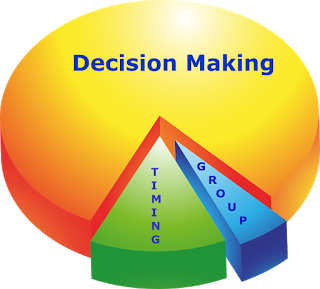 Framing the right questions for Decision Making: One of the most important tasks for business management is to make decisions. However, across the sectors, many business professionals fail to make effective decisions, and part of problems is that they frame the wrong questions, which means they intend to do things RIGHT before doing the RIGHT things, or they try to figure out “HOW,” instead of digging through “WHY” first. It’s also due to the lack of inquisitive minds. People need to ask questions. The proper framing, probabilistic reasoning, sensitivity analysis, vale of information and control are integrated techniques. Framing the right questions requires insightful thinking, visualizing all perspectives and trade-offs prior to making an effective decision.
Framing the right questions for Decision Making: One of the most important tasks for business management is to make decisions. However, across the sectors, many business professionals fail to make effective decisions, and part of problems is that they frame the wrong questions, which means they intend to do things RIGHT before doing the RIGHT things, or they try to figure out “HOW,” instead of digging through “WHY” first. It’s also due to the lack of inquisitive minds. People need to ask questions. The proper framing, probabilistic reasoning, sensitivity analysis, vale of information and control are integrated techniques. Framing the right questions requires insightful thinking, visualizing all perspectives and trade-offs prior to making an effective decision.
Decision wisdom is multidimensional, and decision making takes a multidisciplinary approach, frame the right questions before answer them. It has a combination of analytical/logical thinking up front and intuition to weigh on varying factors, and ensure you include the right information and look at all possible options, and then make the fair judgment and select the best decision.
Digital Valley Book Order Link on Amazon Digital Valley Book Order Link on Barners&Noble Digital Valley Book Order Link on IBook Digital Valley Book Slideshare Presentation & Video Digital Valley Introduction Digital Valley Book Preview Chapter 1 Creative Wisdom Digital Valley Book Preview Chapter 2 Strategic Wisdom Digital Valley Book Preview Chapter 3 System Wisdom Digital Valley Book Preview Chapter 4 Decision WisdomDigital Valley Book Preview Chapter 5 Culture Wisdom
Follow us at: @Pearl_Zhu
 The majority of leaders and professional spend a significant amount of time on making large or small decisions in the work and life. It takes wisdom, not just the intelligence to make effective decisions. There is fuzziness in the decisions because there is fuzziness in conflicting criteria. At the Digital Era, making data-based decisions means to leverage analytical thinking, advanced analytic tools, the human’s intuition, and add the “wisdom’ in the decision process to improve the overall effectiveness of decision making.
The majority of leaders and professional spend a significant amount of time on making large or small decisions in the work and life. It takes wisdom, not just the intelligence to make effective decisions. There is fuzziness in the decisions because there is fuzziness in conflicting criteria. At the Digital Era, making data-based decisions means to leverage analytical thinking, advanced analytic tools, the human’s intuition, and add the “wisdom’ in the decision process to improve the overall effectiveness of decision making.
Judgment and decision making are often considered together: The biggest challenge is knowing what you don’t know, it’s a reasonable moniker for decision-making blind spot and biases. Hence, good judgment is a must for good decisions. There is also a clear distinction between a good decision and a good outcome. In the world of uncertainty and ambiguity, the mind with decision wisdom can, by definition, not control the outcome, however, focus on making good decisions and the best chance for a good outcome is to make a good decision. Some consider decision making is a skill, others think it’s a leadership quality. Either way, it starts with such a “decisive mindset,” with decision wisdom - information-empowered, analytics oriented, and striking the right balance between confidence and humility, logic and creativity; thinking big & small; thinking fast & slow. Decision-making it both art and science.
Applying Critical Thinking for Decision Making: Critical Thinking is an important skill to deal with the multi-logical situation or today’s digital dynamic, which are complex with many moving parts, require multiple disciplines, or have multiple valid viewpoints. Hence, it is crucial to leverage Critical Thinking in decision analysis: the sense of urgency, the impact of decision, scope, who is being impacted, how likely the situation is likely to change or better information will become known, etc. Critical Thinking brings insight into different situations. It is contextual, it involves both induction and deduction continuum. At an organizational level, the purpose of business is given in the quality of collective thought upon business vision and strategy, and how effective you can make decisions to move the business forward at today’s digital dynamic, thinking critically, thinking creatively and think profoundly.
 Framing the right questions for Decision Making: One of the most important tasks for business management is to make decisions. However, across the sectors, many business professionals fail to make effective decisions, and part of problems is that they frame the wrong questions, which means they intend to do things RIGHT before doing the RIGHT things, or they try to figure out “HOW,” instead of digging through “WHY” first. It’s also due to the lack of inquisitive minds. People need to ask questions. The proper framing, probabilistic reasoning, sensitivity analysis, vale of information and control are integrated techniques. Framing the right questions requires insightful thinking, visualizing all perspectives and trade-offs prior to making an effective decision.
Framing the right questions for Decision Making: One of the most important tasks for business management is to make decisions. However, across the sectors, many business professionals fail to make effective decisions, and part of problems is that they frame the wrong questions, which means they intend to do things RIGHT before doing the RIGHT things, or they try to figure out “HOW,” instead of digging through “WHY” first. It’s also due to the lack of inquisitive minds. People need to ask questions. The proper framing, probabilistic reasoning, sensitivity analysis, vale of information and control are integrated techniques. Framing the right questions requires insightful thinking, visualizing all perspectives and trade-offs prior to making an effective decision.
Decision wisdom is multidimensional, and decision making takes a multidisciplinary approach, frame the right questions before answer them. It has a combination of analytical/logical thinking up front and intuition to weigh on varying factors, and ensure you include the right information and look at all possible options, and then make the fair judgment and select the best decision.
Digital Valley Book Order Link on Amazon Digital Valley Book Order Link on Barners&Noble Digital Valley Book Order Link on IBook Digital Valley Book Slideshare Presentation & Video Digital Valley Introduction Digital Valley Book Preview Chapter 1 Creative Wisdom Digital Valley Book Preview Chapter 2 Strategic Wisdom Digital Valley Book Preview Chapter 3 System Wisdom Digital Valley Book Preview Chapter 4 Decision WisdomDigital Valley Book Preview Chapter 5 Culture Wisdom
Follow us at: @Pearl_Zhu
Published on April 16, 2016 23:21
“Digital Valley” Chapter IV Introduction: Decision Wisdom
Wisdom has to do with the soundness of judgment.
The majority of leaders and professional spend a significant amount of time on making large or small decisions in the work and life. It takes wisdom, not just the intelligence to make effective decisions. There is fuzziness in the decisions because there is fuzziness in conflicting criteria. At the Digital Era, making data-based decisions means to leverage analytical thinking, advanced analytic tools, the human’s intuition, and add the “wisdom’ in the decision process to improve the overall effectiveness of decision making.
Judgment and decision making are often considered together: The biggest challenge is knowing what you don’t know, it’s a reasonable moniker for decision-making blind spot and biases. Hence, good judgment is a must for good decisions. There is a clear distinction between a good decision and a good outcome. In the world of uncertainty and ambiguity, the mind with decision wisdom can, by definition, not control the outcome, however, focus on making good decisions and the best chance for a good outcome is to make a good decision. Some consider decision making is a skill, others think it’s a leadership quality. Either way, it starts with such a “decisive mindset,” with decision wisdom: information-empowered, analytics oriented, and striking the right balance between confidence and humility, logic and creativity; thinking big & small; thinking fast & slow. Decision-making it both art and science.
Applying Critical Thinking for Decision Making: Critical Thinking is an important skill to deal with the multi-logical situation or today’s digital dynamic, which are complex with many moving parts, or require multiple disciplines, or have multiple valid viewpoints. Hence, it is crucial to leverage Critical Thinking in decision analysis: the sense of urgency, the impact of decision, scope, who is being impacted, how likely the situation is likely to change or better information will become known, etc. Critical Thinking brings insight into different situations. It is contextual, it involves both induction and deduction continuum. At an organizational level, the purpose of business is given in the quality of collective thought upon business vision and strategy, and how effective you can make decisions to move the business forward at today’s digital dynamic, thinking critically, thinking creatively and think profoundly.
Framing the right questions for Decision Making: One of the most important tasks for business management is to make decisions. However, across the sectors, many business professionals fail to make effective decisions, and part of problems is that they frame the wrong questions, which means they intend to do things right before doing the right things, or they try to figure out “HOW,” instead of digging through “WHY” first. It’s also due to the lack of inquisitive minds. People need to ask questions. The proper framing, probabilistic reasoning, sensitivity analysis, vale of information and control are integrated techniques. Framing the right questions requires insightful thinking, visualizing all perspectives and trade-offs prior to making an effective decision.
Decision wisdom is multidimensional, and decision making takes a multidisciplinary approach, frame the right questions before answer them. It has a combination of analytical/logical thinking up front to weigh on varying factors, and ensure you include the right information and look at all possible options, and then make the fair judgment and select the best decision.
Follow us at: @Pearl_Zhu
The majority of leaders and professional spend a significant amount of time on making large or small decisions in the work and life. It takes wisdom, not just the intelligence to make effective decisions. There is fuzziness in the decisions because there is fuzziness in conflicting criteria. At the Digital Era, making data-based decisions means to leverage analytical thinking, advanced analytic tools, the human’s intuition, and add the “wisdom’ in the decision process to improve the overall effectiveness of decision making.
Judgment and decision making are often considered together: The biggest challenge is knowing what you don’t know, it’s a reasonable moniker for decision-making blind spot and biases. Hence, good judgment is a must for good decisions. There is a clear distinction between a good decision and a good outcome. In the world of uncertainty and ambiguity, the mind with decision wisdom can, by definition, not control the outcome, however, focus on making good decisions and the best chance for a good outcome is to make a good decision. Some consider decision making is a skill, others think it’s a leadership quality. Either way, it starts with such a “decisive mindset,” with decision wisdom: information-empowered, analytics oriented, and striking the right balance between confidence and humility, logic and creativity; thinking big & small; thinking fast & slow. Decision-making it both art and science.
Applying Critical Thinking for Decision Making: Critical Thinking is an important skill to deal with the multi-logical situation or today’s digital dynamic, which are complex with many moving parts, or require multiple disciplines, or have multiple valid viewpoints. Hence, it is crucial to leverage Critical Thinking in decision analysis: the sense of urgency, the impact of decision, scope, who is being impacted, how likely the situation is likely to change or better information will become known, etc. Critical Thinking brings insight into different situations. It is contextual, it involves both induction and deduction continuum. At an organizational level, the purpose of business is given in the quality of collective thought upon business vision and strategy, and how effective you can make decisions to move the business forward at today’s digital dynamic, thinking critically, thinking creatively and think profoundly.
Framing the right questions for Decision Making: One of the most important tasks for business management is to make decisions. However, across the sectors, many business professionals fail to make effective decisions, and part of problems is that they frame the wrong questions, which means they intend to do things right before doing the right things, or they try to figure out “HOW,” instead of digging through “WHY” first. It’s also due to the lack of inquisitive minds. People need to ask questions. The proper framing, probabilistic reasoning, sensitivity analysis, vale of information and control are integrated techniques. Framing the right questions requires insightful thinking, visualizing all perspectives and trade-offs prior to making an effective decision.
Decision wisdom is multidimensional, and decision making takes a multidisciplinary approach, frame the right questions before answer them. It has a combination of analytical/logical thinking up front to weigh on varying factors, and ensure you include the right information and look at all possible options, and then make the fair judgment and select the best decision.
Follow us at: @Pearl_Zhu
Published on April 16, 2016 23:21
“CIO Master” Tuning VIII: Creative Leap
 Innovation is about having new knowledge and new processes. Innovation is about too much knowledge in terms of too many good creative ideas, and too little available resources. Innovation is about prioritization, a system that can “smell” the right idea at the right time and place. Innovation means something new and valuable. Innovation is relative and has context. And innovation is a critical component of business strategy, Often technology is a disruptive force of catalyzing changes, and information provides the dots to spark innovation. So how to leverage IT to enable creative leaps and manage innovation more effectively?
Innovation is about having new knowledge and new processes. Innovation is about too much knowledge in terms of too many good creative ideas, and too little available resources. Innovation is about prioritization, a system that can “smell” the right idea at the right time and place. Innovation means something new and valuable. Innovation is relative and has context. And innovation is a critical component of business strategy, Often technology is a disruptive force of catalyzing changes, and information provides the dots to spark innovation. So how to leverage IT to enable creative leaps and manage innovation more effectively?
What fuels creativity? It is a combination of intrinsic and extrinsic factors: On one hand, we have the level of curiosity, desire to learn and natural ability to maintain an open and inquisitive mind, and on the other hand, we have the conditions of the environment in which we operate, with all the restrictions, the needs, the gaps and pressures that might push our creative minds to soar and also push the organization to put more emphasis on innovation management effectiveness. What there isn't in it is any overt behavioural guidance, so the approach relies on robust, but not rigid structure and process to achieve the result, the participants bring domain knowledge and are guided through the process by facilitators, but the facilitators only manage the process, they don't intervene in content at all other than recording and intervention on behaviour is kept to a minimum. The innovation structure and culture are built on fine tuning and well alignment of people, process, and technology. One of the effects of the innovation structure is that it reduces the impact hierarchy has, so people are freed up by the structure, you don't have to tell them to be free of to think differently. So creativity can flow seamlessly and innovation can be managed more effortlessly.
Creative leap is the way to resolve any paradox via going up a level of abstraction: Creativity is consciousness. It's such desire that sends a true spark through, allowing one to see how all things can be both connected and or disconnected to create completely new forms, systems, and ideas.An individual artistic creativity is an innate and nonlinear activity, the “aha” moment; although creativity can not be taught, your creativity can be harnessed via continuous practice. However, at an organizational level, a systematic innovation process leads to the development of foundation to solve business problems , understanding the challenge, understanding boundaries and hurdles as well as stakeholders core discipline. Keep it simple with the purpose of calibrating the team while enabling free thinking without judgment. Designing strategic conversations to deal with complex problems with multiple stakeholders so that conflicting interests could be reconciled. In the process of reconciliation, there is almost always a need for a creative leap - the way to resolve any paradox is to go up a level of abstraction and the conversational space and process takes groups naturally through that, so the approach transposes that from the physical to the conceptual and conversational domain. Russ Ackoff's three- step formula for creativity: (1) identify assumptions that you make which prevent you from seeing all the alternatives; (2) deny these constraining assumptions; (3) explore the consequences of the denials. Creativity is the high level of thinking to resolve the paradox, and innovation is to transform creativity and achieve its business value.
 One of the drivers of creativity is cross-fertilization and pollination of ideas: This is built into the structure so it happens very naturally in the process. Most of the organizations need both: the "into the box" and "out of the box" thinking. Research shows that 70 to 80% of successful innovations are based on "into the box" thinking. Most of the organizations need both: out of the box and in the box/core innovation. Typically, the majority of projects comes from the latter. How to accomplish this balance is a crucial issue for organizations to manage a healthy innovation portfolio. Shaping a bigger box by making connections between different boxes; rather than thinking outside of one particular box. Look at what other people have in their boxes, find out how their ideas different from what's in your box, and then think about what new structures can be built in space not yet occupied by anyone's box. Building a creativity enabling environment via leveraging digital technology and platform is the ability of an organization to establish the right set of teams or people, collaboration and communication process that will eventually lead to innovation is the key.
One of the drivers of creativity is cross-fertilization and pollination of ideas: This is built into the structure so it happens very naturally in the process. Most of the organizations need both: the "into the box" and "out of the box" thinking. Research shows that 70 to 80% of successful innovations are based on "into the box" thinking. Most of the organizations need both: out of the box and in the box/core innovation. Typically, the majority of projects comes from the latter. How to accomplish this balance is a crucial issue for organizations to manage a healthy innovation portfolio. Shaping a bigger box by making connections between different boxes; rather than thinking outside of one particular box. Look at what other people have in their boxes, find out how their ideas different from what's in your box, and then think about what new structures can be built in space not yet occupied by anyone's box. Building a creativity enabling environment via leveraging digital technology and platform is the ability of an organization to establish the right set of teams or people, collaboration and communication process that will eventually lead to innovation is the key.
Innovation has to result in something which leads us to a better state than where we are today. Strategic organizational development that combines classic strategy with the IT-enabled business capabilities required to compete and implement the strategy in growing pain, building sustainably successful organizations. And innovation leads the way with creativity bumps and leaps, curves and peaks, reap the benefit early on and keep moving on the success path.
Follow us at: @Pearl_Zhu
Published on April 16, 2016 23:19
April 15, 2016
“CIO Master” Tuning VII: IT Digital Transformation
 The majority of IT organizations today get stuck at the low or mid level of maturity, IT is suffered from its reputation as a cost center. Hence, IT leaders need to continue asking those tough questions: Are you doing the right things? Are you doing them the right way? Are you getting them done well? And how to unleash the digital potential of IT? Which “digital-flavored” IT should you run based on your IT organization’s specific strength and capability?
The majority of IT organizations today get stuck at the low or mid level of maturity, IT is suffered from its reputation as a cost center. Hence, IT leaders need to continue asking those tough questions: Are you doing the right things? Are you doing them the right way? Are you getting them done well? And how to unleash the digital potential of IT? Which “digital-flavored” IT should you run based on your IT organization’s specific strength and capability?
IT Digital TransformationRunning IT as an “Innovative Outlier” Many traditional IT organizations are still perceived as an invisible back office maintenance function, without enough knowledge about the business model of the organization; though technology is often the disruptive force for changes, IT function is often slow to adapt to changes. How can modern IT organization shift from a cost center to value creator, from an order taker to strategy co-creator, from an “isolated” support function to an “innovative outlier”?
Running IT as a Business Multiplier Many IT organizations are on the journey to transform from a cost center to a value creator, from a commodity service provider to an innovation engine. The word "transformation" in itself often means radical change and change for the better - new ways and methods of doing things, new structures, new relationships etc. There are changes in two shapes from IT management perspective: One is internal where IT transforms, and the second where IT helps to transform or change the business in line with new strategic imperatives. Change is not for its own sake, but to maximize IT value and ideally, running IT as a business multiplier.
How to Run IT as a Changing Organization For forward-looking and highly mature organizations, the IT department has become synonymous with the change department: In order to make effective changes, you have to know the underneath structure and processes of your business, because they underpin digital capabilities of the organization. How do you make changes to anything without knowing all the parts and how they are related? A mature organization is one that can quickly and safely assess all of the consequences of a possible change and devise effective plans to achieve and sustain those changes - and to do this continuously. The IT department has been left to run change projects. to have a good understanding from a strategic perspective of the organization (structure, processes, locations, drivers, objectives, goals, applications, data, technologies.). Running IT on the Fast Lane Nowadays information is the lifeblood of the business technology is often the digital disruptor, and change is the very nature of Information Technology. The irony fact is that IT is often perceived to be too slow to adapt to the changes in the majority of large enterprise organizations, and some businesses even complain their IT organizations become the obstacle to getting things done. How to speed up IT- it means IT has to adapt to changes in proactive ways, and more often, IT has to drive the changes and plays a pivotal role in digital transformation, focus on the fastest speed available - because that is where the main threat to competitiveness. It is about running IT as a business enabler to catalyze growth and improve organizational agility. In practice, how to run IT on the fast lane?
 Running IT as a Niche Player Digital provides significant opportunities for business growth and innovation, and IT plays a significant role in digital transformation. That means IT has to reinvent its brand from a cost center to a value creator; from an order taker to an idea shaker, and from a commodity service provider to an innovation engine and digital whole brain. But more specifically, what are perspectives to run IT as a niche player?
Running IT as a Niche Player Digital provides significant opportunities for business growth and innovation, and IT plays a significant role in digital transformation. That means IT has to reinvent its brand from a cost center to a value creator; from an order taker to an idea shaker, and from a commodity service provider to an innovation engine and digital whole brain. But more specifically, what are perspectives to run IT as a niche player?The “Future of CIO” Blog has reached 1.3 million page views with 2700+ blog posting in 59+ different categories of leadership, management, strategy, digitalization, change/talent, etc. The content richness is not for its own sake, but to convey the vision and share the wisdom. Blogging is not about writing, but about thinking; it’s not just about WHAT to say, but about WHY to say, and HOW to say it. It reflects the color and shade of your thought patterns, and it indicates the peaks and curves of your thinking waves. Unlike pure entertainment, quality and professional content takes time for digesting, contemplation and engaging, and therefore, it takes the time to attract the "hungry minds" and the "deep souls." It’s the journey to amplify your voice, deepen your digital footprints, and match your way for human progression.Follow us at: @Pearl_Zhu
Published on April 15, 2016 23:47
Three Questions to Assess a Person’s Self-Discipline Skill
 The era of face-to-face, top-down management, and command & control style of leadership – is beginning to change. Due to the digital connectivity via advanced digital technology, we live in the hybrid world well mixed with physical business building and remote working environment, the work is no longer just the place you go in fixed hours, but the task you accomplish at always on and always connected environment. There are also more opportunities and temptations due to today’s digital convenience. The team is often self-organizing in being disciplined enough to do the work. Hence, self-motivation, self-discipline and time management become more important, not less, to define the “right people” in digital organizations. But which questions shall you ask to assess a person’s self-discipline skill?
The era of face-to-face, top-down management, and command & control style of leadership – is beginning to change. Due to the digital connectivity via advanced digital technology, we live in the hybrid world well mixed with physical business building and remote working environment, the work is no longer just the place you go in fixed hours, but the task you accomplish at always on and always connected environment. There are also more opportunities and temptations due to today’s digital convenience. The team is often self-organizing in being disciplined enough to do the work. Hence, self-motivation, self-discipline and time management become more important, not less, to define the “right people” in digital organizations. But which questions shall you ask to assess a person’s self-discipline skill?
Do you have self-consciousness or self-awareness about the goals you set or situations you encounter? Self Discipline is about disciplined thoughts. Thoughts are single pointed and focused to whatever you do. We experience all kinds of situations good and bad in our lives that require moral courage to deal with. Self-discipline is what supports that moral courage and allows us to act in a right manner. Self-disciplined people have better clarity of thoughts and, therefore, do not get carried away by the herd mentality. They may exercise restraint while expressing emotions or may avoid indulgence because of better control over self / clarity of thoughts and not because of any weakness.
Do you have the sustainable motivation to further enforce self-discipline? Motivation can come and go just as easy - if it is not the heart desire, a true passion, an authentic expression. Awareness is at the level of the energetic connection between Heart and Mind. You sense yourself and that's all you need to let your thoughts and behavior work to keep you motivated. Without discipline, you do not manage to transform negative habits and you do not create a new state of awareness where the self is nourished through the experience of positivity. Letting people explore where their energy is and then align the energy to work at hand. On the other hand, many expect that nothing needs to be done. A sustained motivation will further enforce self-discipline. Success requires determination, persistence, discipline, dedication and practice in the present and a continuum.
 Do you have the prioritization and superior Time Management skill with strong disciplines to achieve goals? The human being needs to be enthused to participate fully. Get excited about a goal to achieve is a form of love that allows you to pursue it with greater emotional determination. In general, objectives achieved without enthusiasm are mediocre. The second is the ability to impose themselves a method to set priorities balanced and impose the discipline needed to run them. The third is Time Management skill with is all about choosing to help oneself by being able to put in efforts only after you have prepared self to take and bear risks of meeting and facing challenges of fears and their beliefs which blind others. When all these skills properly applied, the method allows increasing the ability to achieve personal and professional goals.
Do you have the prioritization and superior Time Management skill with strong disciplines to achieve goals? The human being needs to be enthused to participate fully. Get excited about a goal to achieve is a form of love that allows you to pursue it with greater emotional determination. In general, objectives achieved without enthusiasm are mediocre. The second is the ability to impose themselves a method to set priorities balanced and impose the discipline needed to run them. The third is Time Management skill with is all about choosing to help oneself by being able to put in efforts only after you have prepared self to take and bear risks of meeting and facing challenges of fears and their beliefs which blind others. When all these skills properly applied, the method allows increasing the ability to achieve personal and professional goals.
The high performing and high potential digital professionals are self-motivated, self-directed, self-inspired. Self-discipline is nothing but self-consciousness. Self-disciplined people are more influential because more often they can harmonize their mind, their heart, and their action, to put simply, walk the talk. People are still drawn toward highly disciplined people because they like the stability of knowing that a person they are following is consistent and reliable.
Follow us at: @Pearl_Zhu
Published on April 15, 2016 23:43



